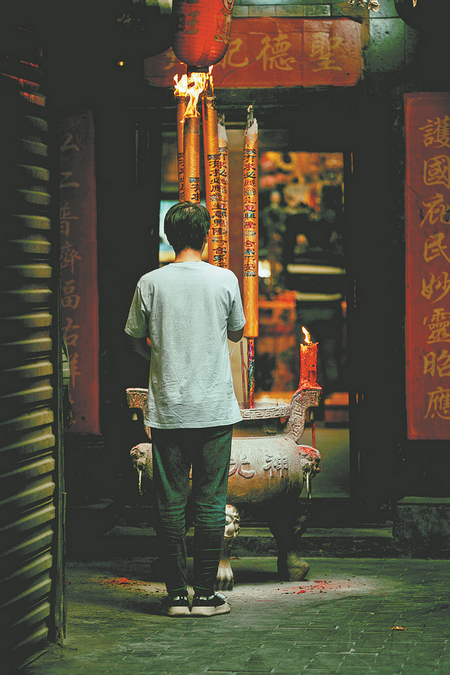
A man prays at Tianhou Temple on Zhongshan Road in Haikou.MICHAEL RHYS CARD/CHINA DAILY
Hainan, meaning "south of the sea", is the southernmost province in China and contains a number of islands within its jurisdiction, most prominent of which is the province's namesake.
Popular throughout the year as a tourist destination, the island welcomes great throngs of tourists over the winter period with many flocking to the island's sandy shores to enjoy its pristine beaches, in particular those of Sanya.
And though there is much to be said about a trip to Sanya, arguably the most popular destination on Hainan, there is a strong case to be made for another city on this picturesque tropical island.
Sitting on the northern coast of the island is the provincial capital of Haikou, also known as the "coconut city", which offers a unique snapshot of Chinese culture and the history of its inhabitants, many of whom are returnees from overseas.
As is often the case, every element of a city — its architecture, cuisine, lifestyle and customs — reflects its inhabitants, and in the case of Haikou in the 1920s and '30s, the city was a hub for Chinese citizens returning from overseas and bringing with them different aspects of the cultures they experienced while abroad.
This can be seen across the whole of Haikou, but most prominently in the city's old town, which was built by those who returned from overseas. The style of the houses and shops is heavily influenced by the countries they returned from, with abundant Portuguese, French and Southeast Asian influences.
Many of the buildings and their facades have not been touched since their construction in the early 20th century, and by exploring the narrow streets with their mix of Western and Chinese medicine stores, silk and clothing shops, and the eye-opening fresh fish and meat wet markets, you can immerse yourself in the everyday lives of the local people, who are particularly welcoming to inquisitive travelers.
Though taking a trip through these somewhat tumbledown streets is undoubtedly the most authentic experience of how residents lived and still live, Zhongshan Road, another arcade street, has been beautifully restored and offers a glimpse of what the local architecture would have looked like in its heyday.
The street is home to a variety of shops, restaurants and, most strikingly, the goddess Mazu, another of the city's influences, who can be seen in all her glory in Tianhou Temple. Unlike much of inland China, Hainan's culture was understandably influenced by the customs of China's coastal regions — for instance, in the worship of Mazu, who represents the deified Lin Moniang, an ancient figure from Fujian believed to have lived during the 10th century, and who was revered along the coasts of China as she is believed to protect fishermen and sailors. To this day the reverence placed on her worship is plain to see.
With its fascinating history and the amalgamation of cultures and customs brought back to the island by overseas Chinese, the atmosphere of Haikou is more than worth experiencing.
And with Hainan's eastern and western ring railways, a trip around the island can be achieved in under four hours, meaning there is no excuse not to experience what Haikou has to offer when visiting this tropical island paradise.
Contact the writer at michaelrhyscard@chinadaily.com.cn
 Michael Rhys Card
Michael Rhys Card
By Michael Rhys Card | China Daily





